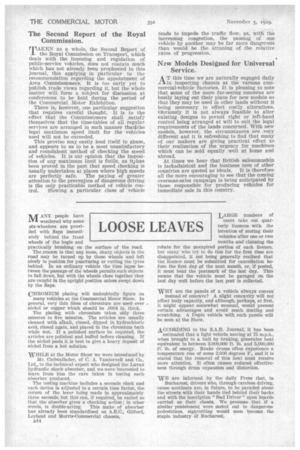The Second Report of the Royal Commission.
Page 112

If you've noticed an error in this article please click here to report it so we can fix it.
TAKEN as a whole, the Second Report of the Royal Commission on Transport, which deals with the licensing and regulation of public-service vehicles, does not contain much which has not already been prophesied in this journal, this applying in Particular to the recommendation regarding the appointment of Area Commissioners. It is too early yet to publish trade views regarding it, but the whole matter will form a subject for discussion at conferences to be held during the period of the Commercial Motor Exhibition. There is, however, one particular suggestion that requires careful thought. It is to the effect that the Commissioners shall satisfy themselves that the time-tables of all regular services are arranged in such manner thattthe legal maximum speed limit for the vehiclesused will not be exceeded.
This proviso may easily lend itself to abuse, and appears to us to be a most unsatisfactory and roundabout method of checking the speed of vehicles. It is our opinion that the imposition of any maximum limit is futile, as itihas been proved in the past that speed checking is usually undertaken at places where high speeds are perfectly safe. The paying of greater attention to the prevenpon of dangerous driving is the only practicable method of vehicle con trol. Slowing a particular class of vehicle tends to impede the traffic flow, as, with the increasing congestion, the passing of one vehicle by another may be far more dangerous than would be the attuning of the relative rates of progression.




































































































































































































































































